When you are out in the wilderness, it is important to keep your teeth clean. Not only will this help keep your breath smelling fresh, but it will also help prevent tooth decay and other oral health problems.
Oral hygiene is far more than a nicety; if you neglect your mouth long enough you could fall victim to tooth decay, ulcers and worse!
Dealing with agonizing, incapacitating pain in the middle of an austere environment when you have no hope of getting the proper care from a dentist will turn an enjoyable foray into a survival situation, and a survival situation into a waking, breathing nightmare!
You don’t want this to happen to you, and luckily it is not too tough to take good care of your chompers wherever you happen to be.
In this article, we will share with you 10 ways to brush or clean your teeth while camping or surviving in the wild!
You Cannot Neglect Your Mouth in the Wild!
One of the most important things you can do to maintain your oral health while in the wild is to not neglect your mouth in the first place. This means that you should brush your teeth at least twice a day, and floss daily if possible.
The ideal way to do this is with a toothbrush, toothpaste, and floss just like you would normally do as part of your morning and evening routines.
But let’s say this just isn’t possible for whatever reason. You didn’t bring your toothbrush, your toothpaste ran out three days ago, or you simply can’t find the time to brush your teeth more than once a day.
What now? Do you give up and just let your mouth turn into a festering pit? Absolutely not! There are still plenty of ways to clean your teeth and keep them healthy while in the wild.
All you will need is access to a few natural materials or other rudimentary supplies and a little bit of ingenuity to get the job done. So without further ado, here are ten ways to brush or clean your teeth while in the wild.
How to Keep Your Teeth Clean in the Wild
Whittle a Toothpick from a Twig or Thorn
If you are in the wilderness and have access to a branch, you can easily whittle yourself a toothpick.
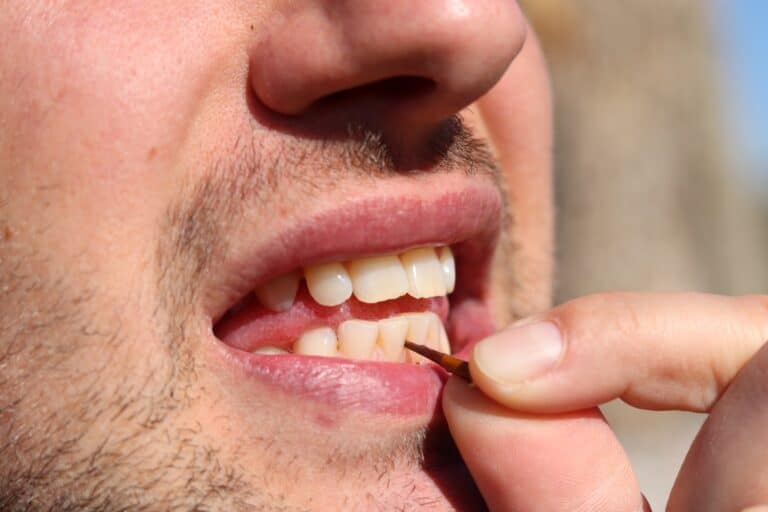
This is a great way to clean your teeth if you don’t have any other supplies on hand, and it is especially useful for removing food particles from between your teeth.
Simply snap off a small piece of branch (preferably one that is relatively straight), and then whittle it down to a point with your knife. A safety pin from your survival kit will work just as well:
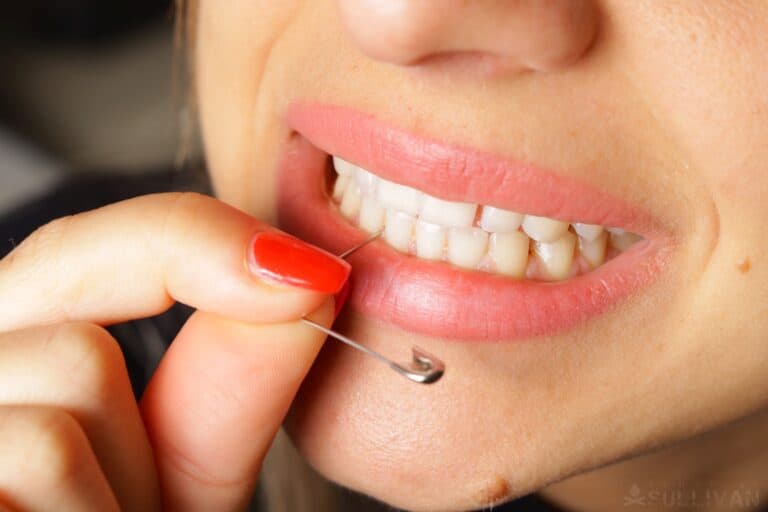
Once you have a sharp, pointy toothpick, use it to pick food out from between your teeth and to scrub away any plaque or tartar buildup.
As always, be careful when whittling that you don’t cut yourself (or we’ll have to direct you to one of our first-aid articles!), and make sure you don’t use a branch or twig from a toxic plant!
Make a Toothbrush from a Branch
If you have a little bit more time on your hands, you can use a branch to make yourself a toothbrush.
This is a great way to clean your teeth if you don’t have any other supplies, and it is especially useful for getting to those hard-to-reach places in your mouth.
To make a toothbrush from a branch, you will need a branch that is about as large around as your ring finger, and preferably one that is fully formed, but still young and soft.
Then all you need to do is peel the bark from the far end and cut a series of intersecting slits in it.
Now gently chew on the cut end of the branch. This will fray the fibers of the wood open, and create a fuzzy, brush-like surface.
You can then use this brush to scrub away plaque, tartar, and food particles from your teeth like normal, though you’ll have to hold it slightly differently.
Again, just be sure you don’t use a branch or twig from a poisonous plant! The best branches for this purpose are often from fruit trees as they tend to have mild antiseptic properties.
You can dip your improvised toothbrush in water to moisten it, and don’t be afraid to cut it down and start again if it wears out. Or just grab a new branch!
Use a Cloth
You can use a cloth wrapped around the end of a finger to scrub and polish your teeth like you are buffing chrome detailing on a car.
This method is good for getting rid of surface stains, debris, and plaque, but it won’t do much for food particles between your teeth.
A clean, soft cloth is best for this purpose, but any type of fabric will work in a pinch. You can even use an old t-shirt, a bandana, or even a gauze pad:
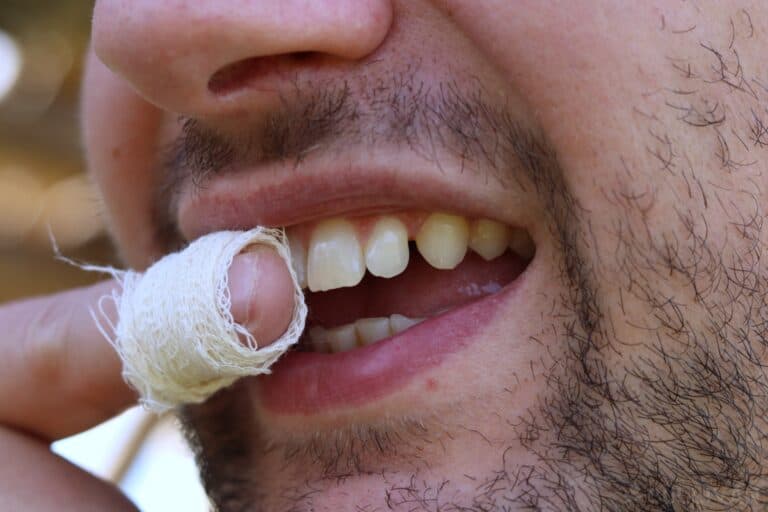
Try to make sure it is as clean as possible under the circumstances; you don’t want to put more germs in your mouth!
Just wet the cloth (or dip it in some water), and then rub it around all of your teeth, using circular, back-and-forth, and up-and-down motions.
You can also use the cloth to massage your gums a bit to stimulate blood flow.
If you have some toothpaste or another improvised cleaning agent found elsewhere on this list you can combine it with this method for a surprisingly effective one-two punch. Spit and rinse when you are done.
Brush with Your Finger
If you are in such a bad way that you lack even a cloth to scrub your teeth with, you can go ahead and use your bare finger. This is not the ideal way to clean your teeth, but it will work in a pinch
Just wet your finger or load your mouth with some water and then rub it around all of your teeth, using the same circular, back-and-forth and up-and-down motions.
It won’t work as well as a cloth, but it is better than nothing.
It should go without saying that your hands really need to be as clean as possible before you put them in your mouth!
Washing them with soap and water is best, or hand sanitizer lacking that, but if that isn’t possible, at least give them a good going over with some clean water and wipe them thoroughly.
Take care with long nails, too, as that is a good way to inflict a cut or scratch on your gums.
Make an Activated Charcoal Scrub
Activated charcoal is a great way to clean your teeth if you are in the wild and don’t have any toothpaste or other supplies.
This black powder is made from carbon that has been treated with oxygen, and it has a number of medicinal and cleaning properties. It can be used against poisoning, to alleviate diarrhea and vomiting, and as a way to whiten and clean teeth.
This is something that you should keep in your dental survival kit even if you aren’t planning on brushing your teeth with it!
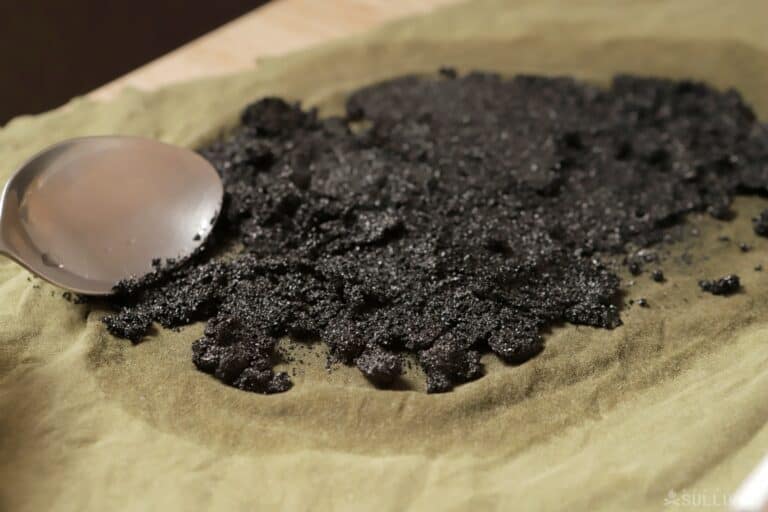
To use it as a tooth scrub, just wet your toothbrush or improvised tooth cleaning apparatus, dip it in some activated charcoal powder, and brush your teeth with it like normal.
Note that you will look like an extra from The Evil Dead after doing this. Don’t worry, just spit and rinse when you are done to easily flush the black residue away.
It is important that your activated charcoal be reduced to a fine, powder consistency so it does not abrade and irritate your gums.
You can also make a paste out of water and activated charcoal if you need something of higher viscosity.
Use Baking Soda
Baking soda is another great all-around cleaning agent that can be used in a pinch to clean your teeth.
It is mildly abrasive and can irritate the tissues of your mouth if you are too enthusiastic, so be careful, but it helps remove plaque and surface stains. It also has proven antibacterial properties. Plus, it’s readily available almost anywhere for pennies!
You’ll definitely want to keep some with you and it is especially a good option if you have some handy when overlanding or camping in an RV.
To use baking soda as toothpaste, just wet your toothbrush, dip it in the baking soda, and brush your teeth. Spit and rinse when you are done.
You can also make a paste out of water and baking soda if needed, and this is generally better than using it dry or barely moist. Simply mix a 1:1 ratio of this produce and water, and you’re good to go:
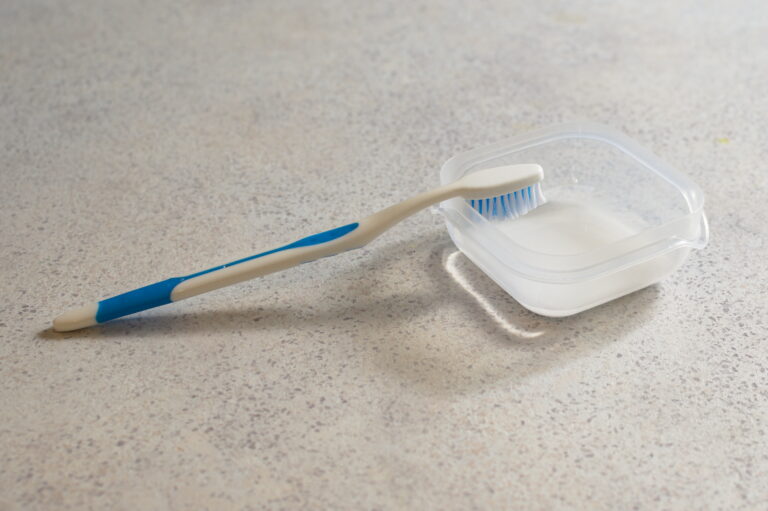
Take care, though… Many folks find the flavor and texture of pure baking soda revolting and will gag, so maybe give it a test run before you commit, huh?
Try a Salt Water Rinse
Salt is another great all-around cleaner and disinfectant that can be used to clean your teeth. It is less abrasive than baking soda, but it does have a decidedly strong flavor.
More important to us, it also has formidable antibacterial and germ-killing properties.
To use salt as a debriding agent or mouthwash, just dissolve some salt in water until it has disappeared and then gargle with the mixture for about 60 seconds before spitting it out.
Do not swallow! Saltwater will make you terribly sick and will dehydrate you.
Rinsing with straight salt water in this way will help remove any loose debris or particles from your teeth and gums and nuke any germs that are hiding elsewhere in your mouth. Again, take care not to swallow the salt water!
Make Pine Needle Mouthwash
Many campers and preppers well versed in wilderness lore know that pine trees can be one of your best friends, supplying the industrious with many useful materials.
Wood and sap are foremost among them, but pine needles also have many uses, including for tea and, more germane to this conversation, as the main ingredient in antiseptic mouthwash!
Pine needle mouthwash is easy to make and can be done with just a few pine needles, some water, and a container to hold the mixture in while it steeps. All you’ll need to do is find young pine needles that have just unfurled.
Simply crush and pound the needles until they are broken up and pasty, and then add the needles to your container before pouring near-boiling water over them until they are covered.
Allow the mixture to steep for about half an hour before straining it through a cloth or coffee filter.
Once it has cooled, you can use it like any other mouthwash, swishing it around your mouth for 30-60 seconds before spitting it out. Refreshing!
Water Bottle Waterpik
If you are really in a bind and have no other options available to clean your teeth, using water from your water bottle to rinse your mouth out can work in a pinch.
It will not remove all the plaque or bacteria, but it will help to remove some of the debris that has built up on your teeth during the day.
To use this method, you’ll need to poke a tiny hole in the cap of a water bottle in order to use it as an improvised squirt bottle. This will allow you to build up the necessary pressure to get a jet of water blasting in between your teeth.
Aim the stream of water at your teeth and gum line and move it around to remove as much debris as possible.
Spit the water out after each pass. You’ll want to do this several times until you feel like your mouth is reasonably clean.
As you might have guessed already, this will compromise your water bottle, so don’t do it unless you have a spare bottle or a matching cap!
Chew Sugar-free Gum
Sugar-free gum is a great way to keep your teeth clean while you are on the go.
It helps to remove plaque and bacteria from your teeth, and it also stimulates saliva production, which helps to neutralize acids and rinse away debris.
Look for gum that contains xylitol, as this is the ingredient that has been shown to be most effective in helping to reduce tooth decay, and possible toothaches.
Chewing on gum also stimulates the production of saliva which will help to flush away germs and old food, too.
Chew the gum after meals and snacks, or whenever you feel like your mouth needs a quick cleanup. Just make sure that you spit out the gum when you are done!
Compared to other methods on this list this one is decidedly a “consumable” option, so once you run out of gum you’ll have to resort to another method on this list.
Your Teeth Will Be Sparkling Clean
Even in the wild, it is important to take care of your teeth and gums to avoid infection and disease.
There are a number of ways that you can do this, from using natural ingredients like salt water and pine needles to more improvised methods like using a water bottle as a field expedient water flosser.
No matter what method you choose, just make sure that you are consistent in keeping your teeth clean.
What other methods do you use to keep your teeth clean when you are away from home? Share your tips in the comments below!
And don’t forget to share this article with your friends and family so they can be prepared, too. Stay safe out there!

Tom Marlowe practically grew up with a gun in his hand, and has held all kinds of jobs in the gun industry: range safety, sales, instruction and consulting, Tom has the experience to help civilian shooters figure out what will work best for them.
